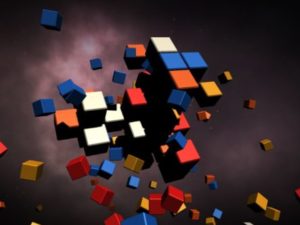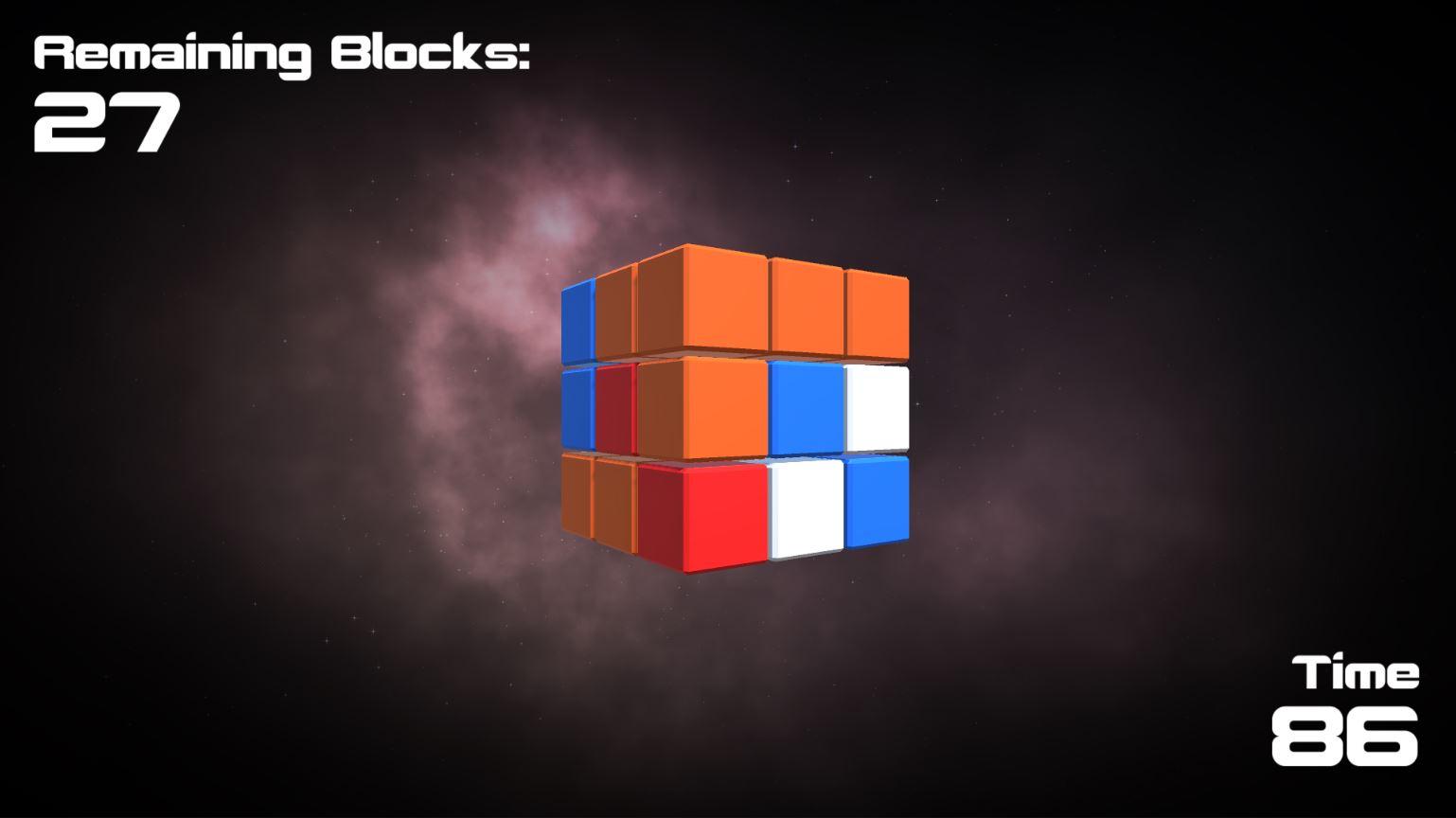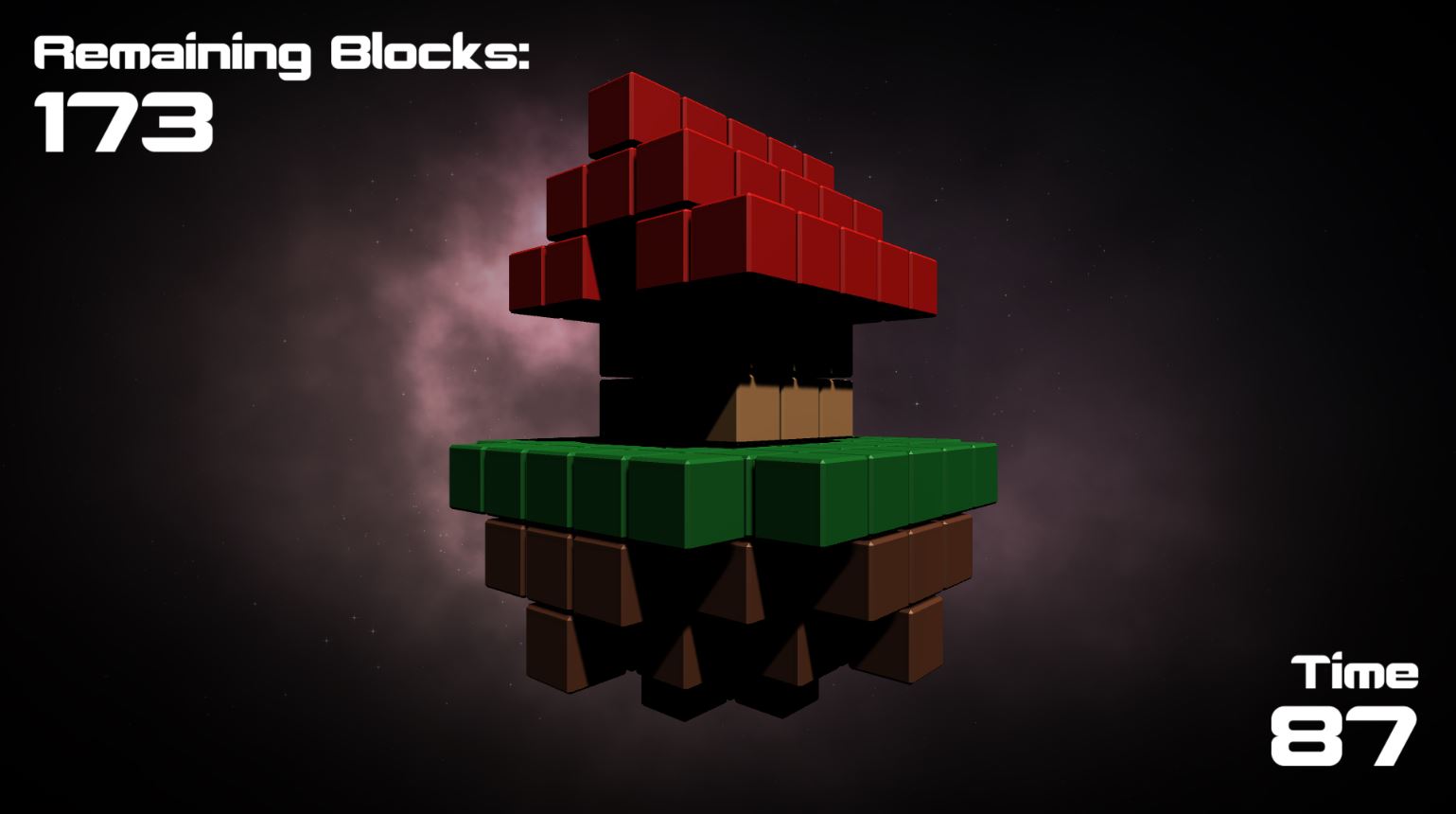
Block Breaker was the first game I designed for LUMO without client input or management oversight. In many ways, it was “my” first game.
The concept is relatively simple; the player throws balls at the game projected on a wall, and wherever the system detects a ball hitting, it destroys a portion of the object shown on-screen. The levels are each made from a series of cubes assembled to resemble everything from an apple to a house to a massive robot.
Each of the levels also pivots on a central axis, and is sent spinning wildly whenever it’s hit, with the speed and direction of the rotation based on the position of the impact. In essence, it reacts like a digital pinata.
Levels
Each level features a single object made from an ever-increasing number of cubes. The first level, for example, is a simple cube made from 27 smaller cubes in a 3x3x3 grid. One of the later levels, however, is a house made from ~175 cubes.
Each of the levels was hand-made block-by-block, as the small scope of the project made automation less efficient in the long run. Depending on the level, the cubes can be either randomly-colored, or tinted a specific shade, depending on whether the color matters for the object at hand.
Mechanics
When a ball is detected hitting a block, the block is deleted, letting off a burst of cubical particles as if breaking apart. The exact position of the impact is measured relative to the center of the screen, and from that the angle of rotation is calculated from the position, and the speed of the rotation is set based on the distance from the center. Eventually, the rotational speed decays, and the level returns to spinning slowly in a preset direction.
Originally, the level simply decayed to a standstill, but I found that having a minimal rotation made the game more engaging to passers by, and offered the player(s) the chance to choose their targets rather than just blindly throwing at the center of the screen over and over again.
At the center of each level is a special golden block which cannot be destroyed by impact. This block functions as the pivot point of the rest of the level, and can only be destroyed once every other block is gone, at which point it begins to shake before self-destructing. There’s no technical reason for this ‘core’ block that couldn’t be dealt with without it, but I found that having a visual center-point of the level made the rotation more understandable and made the game overall more intuitive for first-time players.
